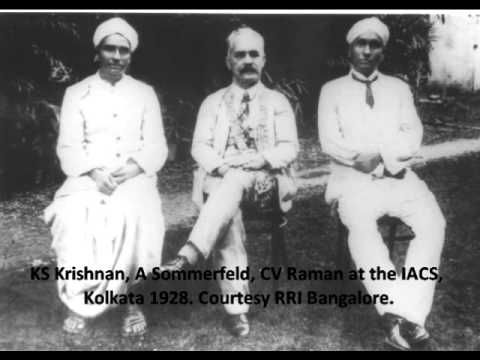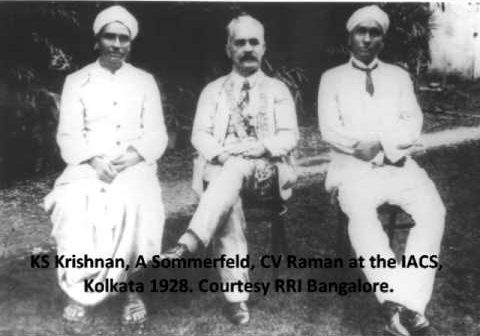Eighty nine years ago, an Indian scientist discovered a phenomenon that would change the way the world understood the scattering of light. For this discovery, he was awarded the Nobel Prize in 物理学 in 1930, being the first Asian and non-white to have received this laurel.
その現象が「ラマン効果」であり、その仕掛け人がC.V.ラマンである。ラマン効果とは、散乱した光子が入射した光子と同じエネルギー(周波数と波長)を持つ必要がないことを示すものである。光子が原子に衝突すると、ある程度のエネルギーが失われ、各原子は特定の量のエネルギーしか保持できない。ラマンの周波数シフトに対応するエネルギーを調べることで、物質の組成や性質を特定することができる。

C.V. Raman had one dedicated student and collaborator who helped his リサーチ realize success. By his side was K. S. Krishnan, who contributed enormously to Raman’s studies and experiments. Krishnan, who was working in Madras Christian College, moved to Calcutta in 1920 to work with Raman. During the years 1925 to 1928, Krishnan authored singly or jointly 16 papers, under Raman’s tutelage. He was the one who first gave Raman a demonstration of the scattering. Between Feb 19th and 26th, 1928, Krishnan performed many experiments that proved the inelastic scattering of light. The discovery of the Raman effect was made jointly by Raman and Krishnan on February 28th, which is now celebrated as National Science Day.
1930年にラマンがノーベル賞を受賞した後、クリシュナンの貢献が十分に評価されていないのではないかという論争が起きていた。しかし。 クリシュナンは次のように語っている。:
「ノーベル賞受賞講演を読むと、このテーマの進歩と歴史についての真実で正直な説明であり、教授はK.R.ラマナサンから順にすべての共同研究者の名前を挙げ、全員(私を含む)に正当な評価を与えています。教授は公開講座で何度も何度も、効果の発見において私が彼と協力したこと、そして私たちの協力関係がボーエンとミリカンの協力関係に似ていることに言及しており、これは実に称賛に値するものでした」。
C.V.ラマンは画期的な発見をしましたが、彼の発見は一人の人間によってなされたものではないことも忘れてはなりません。それは2人の科学者の共同作業の産物であり、2人の人間が頭と技術と専門知識を結集した結果なのだ。
全米科学デーを祝うにあたり、より素晴らしいコラボレーション、発見、イノベーションが生まれることを祈っています。







